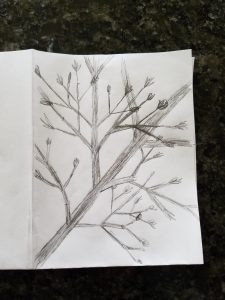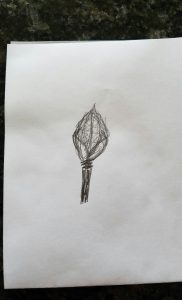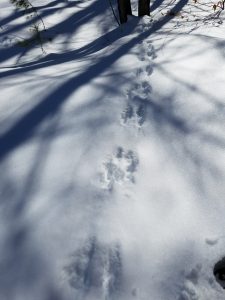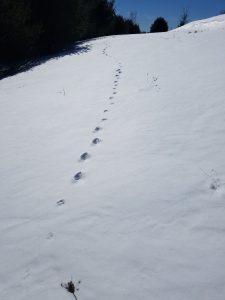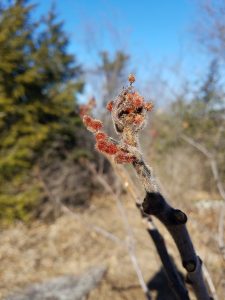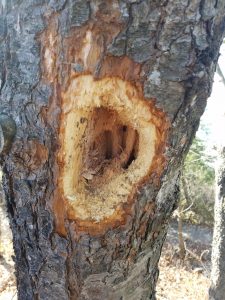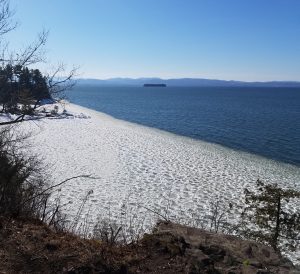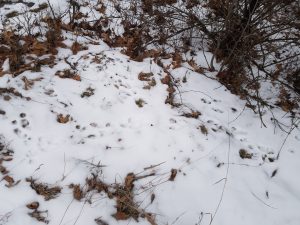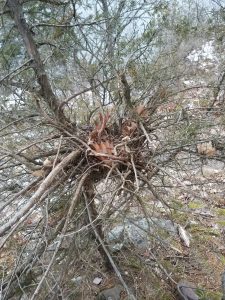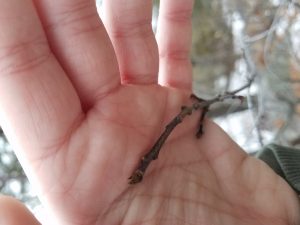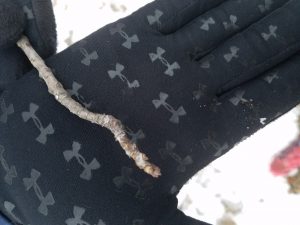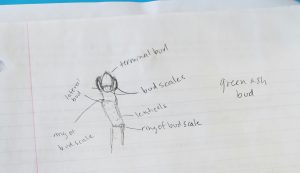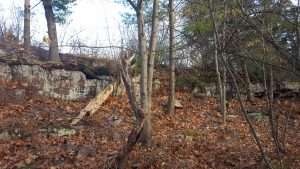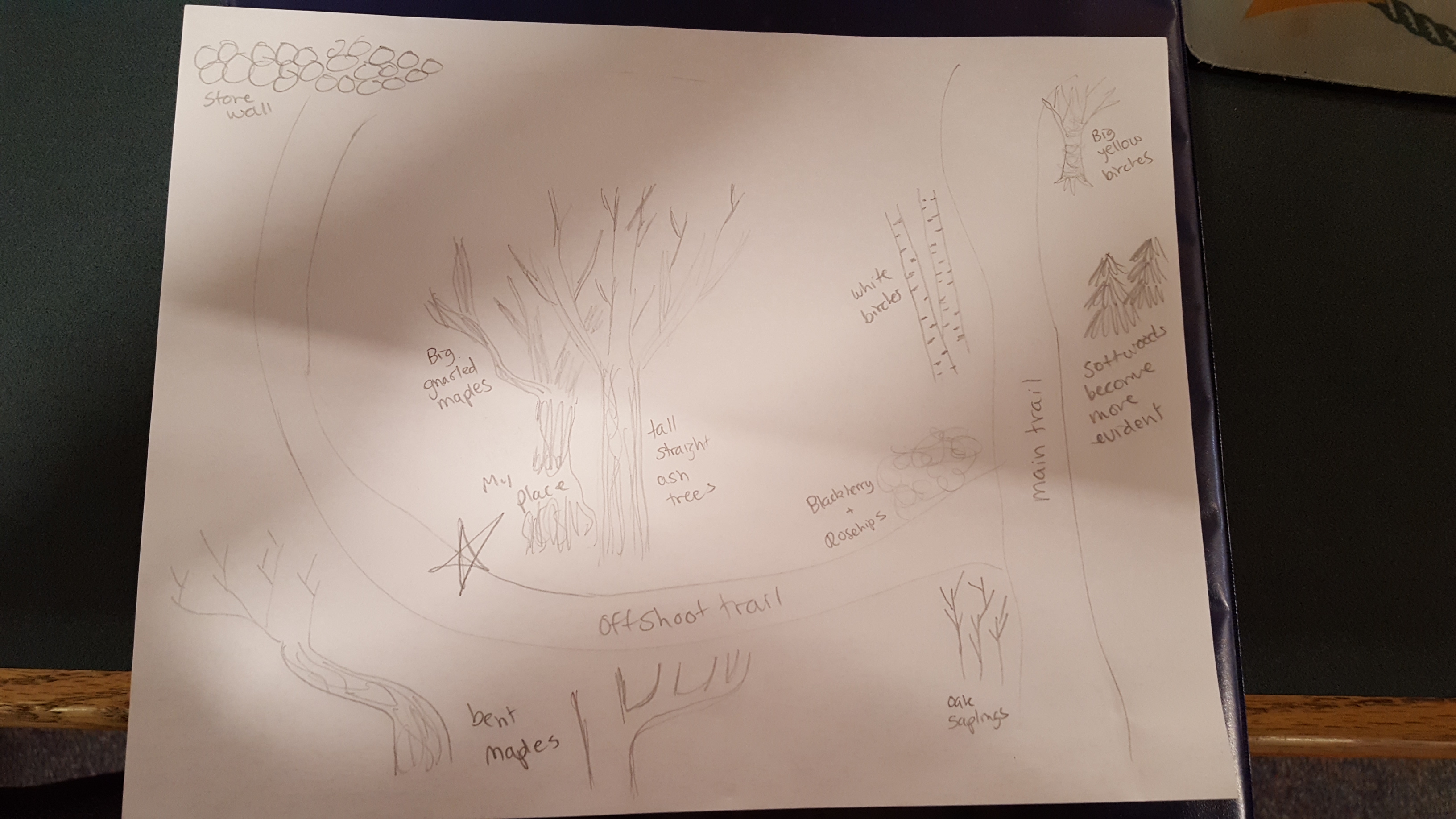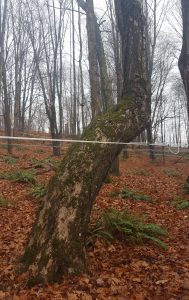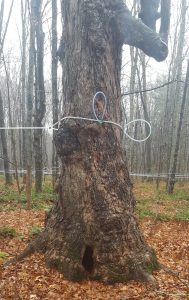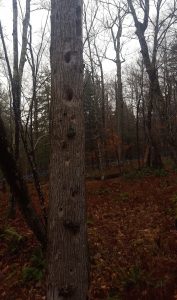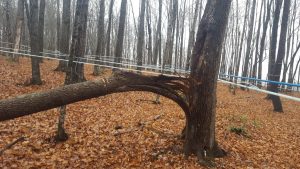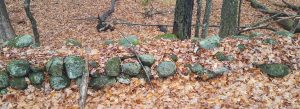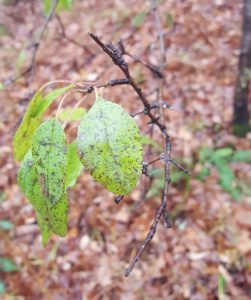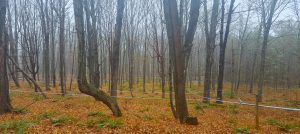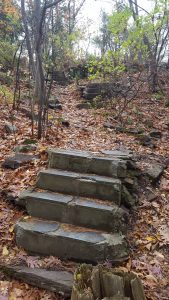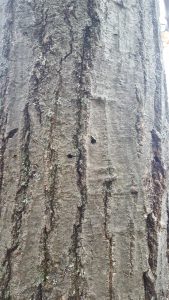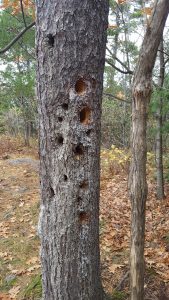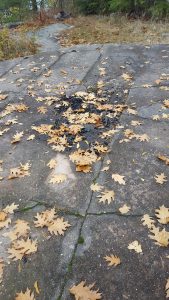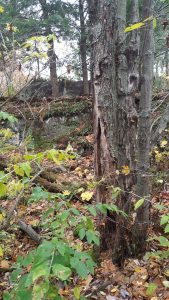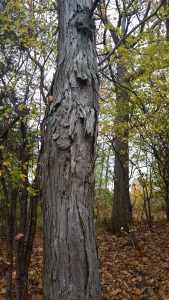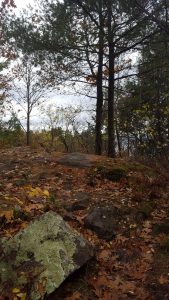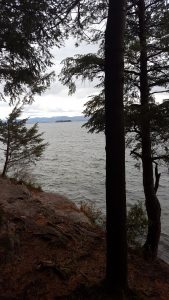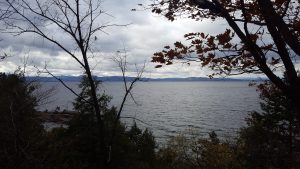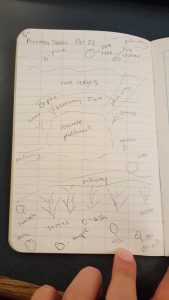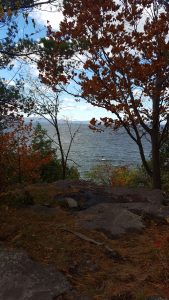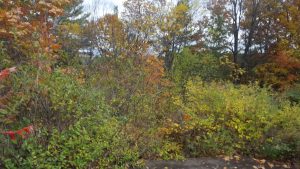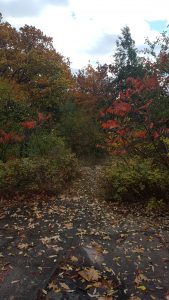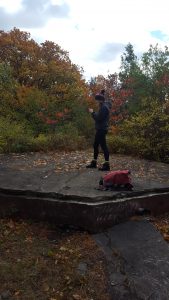Today was my final visit to my spot at Oakledge park this school year. It was strange and a bit nostalgic, but overall a nice visit. It was approximately 64 degrees out, humid, and especially buggy. There were mosquitoes and small, black bugs everywhere. This, of course, was not ideal but I tried to make the best of it.
Lake Champlain was the most calm I have ever seen it. There were hardly any waves. I think this was because there was no wind.

It was nice to see the grass have color on it and new plant growth peeking up through the undergrowth.

Several trees were flowering, which was beautiful. One in particular caught my attention, which I interpreted to be a Star Magnolia (Vermont Tree Selection Guide). The tree was not very tall, with thin branches and grayish bark. The flowers were white with long skinny petals.
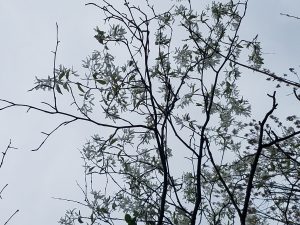
The trail leading to my spot is much greener than it has been since the fall, which was also a welcome sight.
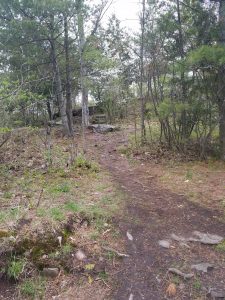
One cool thing that I observed from my spot today were Mallard ducks flying above Lake Champlain. They flew close to the water, and unfortunately I could not get a picture of them.
I think that my spot is a particularly good example of nature and culture intertwining, if you consider both the history and current use of the place. As I wrote in a separate blog post, my spot has been used for recreation for quite some time now, but has only been part of a public recreational park for a little while. Although my spot isn’t in the most visited park of Oakledge Park, people still come by and look out over the lake. People will come to sit, play music, or hang out with their friends at this space, all while the animals and plants go about their functions as well. I think that it is definitely a good thing that Oakledge Park was partially left undeveloped. This way, humans can have their space for their activities and animals also have their space to grow and live.
I, however, do not consider myself part of my physical spot. I may have an understanding of and relationship with my spot that not every average passer-by has, but I think saying that I am one with my space almost gives me ownership over this space, as I have ownership over my own body or material possessions. The land that my spot is on is public land, and therefore belongs to the public, and therefore anyone could potentially become “one” with my spot. Not to mention, my spot is in a natural place. I think that humans have a place in nature, as all living things do, but I think that being part of it still retains some sort of ownership that I do not think that I have or deserve. I think that I have respect for my spot and the land surrounding it, but I don’t think that I am a part of it.
Returning one last time to this place at Oakledge Park was certainly a good way to start to wrap up freshman year for me. I enjoyed watching the plants change as the seasons went by and spending time looking out over Lake Champlain in this mostly secluded area. This phenology project was very interesting, and I am excited to maybe return to this spot in my subsequent years at UVM.
“Vermont Tree Selection Guide.” (n.d.): n. pag. Vermont Department of Forests, Parks & Recreation. Vermont Urban & Community Forestry Program. Web. 4 May 2017. .
